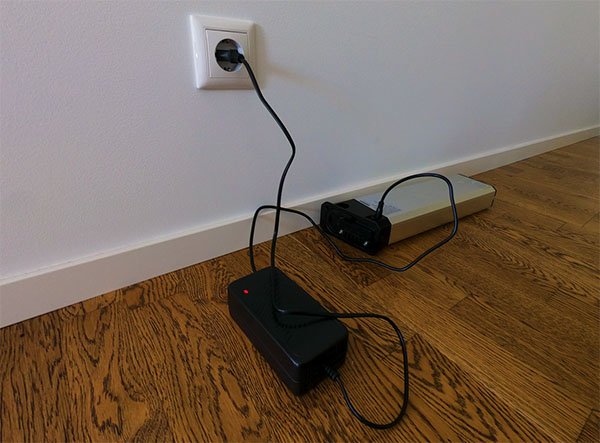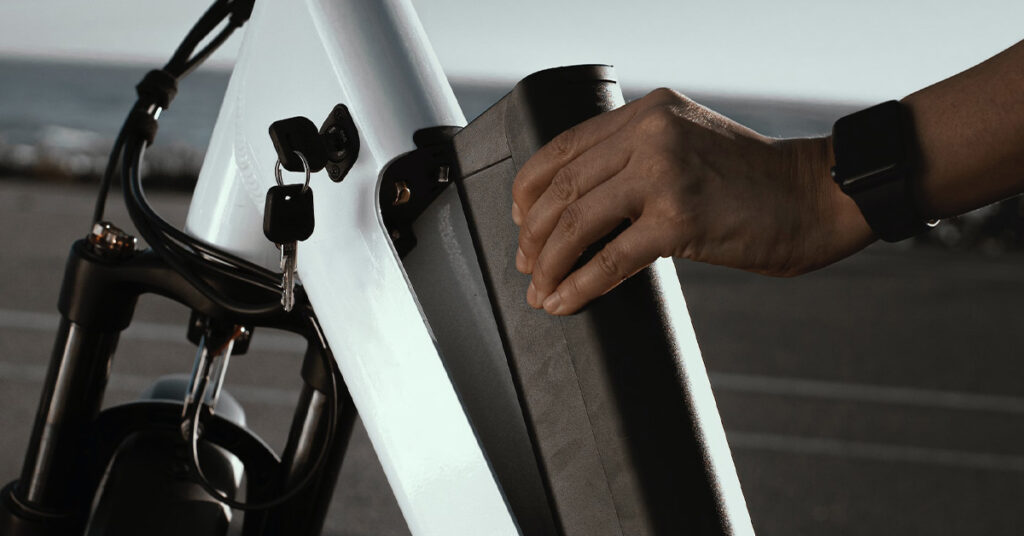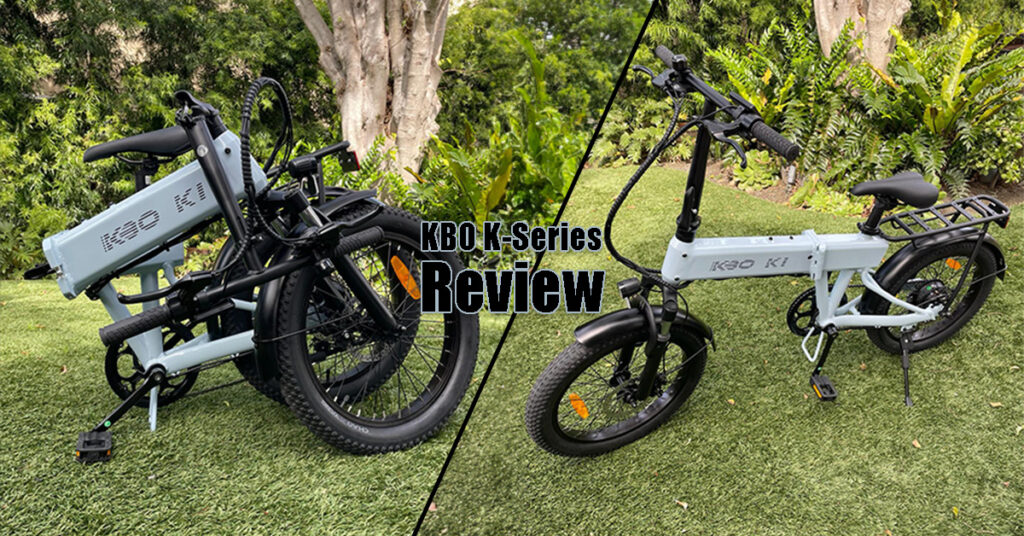Batteries are vital components of an electric bike because they produce the necessary electrical signals to power the motor and other electrical accessories.
In addition, they are among the most crucial fittings in any device. Batteries are also costly and can be available in different sizes, depending on their use.
Today, traditional bikes have advanced and become electrically powered mobility vehicles. Therefore, you must understand an e-bike’s battery to plan your ride and know how to maintain it.
The battery’s performance, lifespan, and safety are other necessary factors you must check out before purchasing an electric bike.
We will explain e-bike batteries and what to consider for the best riding experience if you have been looking for the perfect e-bike. It would be best to understand what it takes.
- Common E-Bike Battery Terms
- Types of Electric Bike Batteries
- How Far Can E-Bike Go In a Single Charge?
- E-Bike Battery Buying Guide: How to Choose E-Bike with Best Battery?
- Removable Battery vs Built-In Battery: Which is Better?
- How Long Do E-Bike Batteries Last?
- How to Charge E-bike Battery?
- Conclusion on E-Bike Batteries
Common E-Bike Battery Terms
To understand e-bike batteries, you must be familiar with a few battery terms. Here are the most common.
Voltage (V)
In short, the more voltage the e-bike battery has, the better acceleration and speed dynamics it can provide.
Voltage is the amount of potential energy or the electrical difference between two points in a circuit. Typically, it is the potential electrical difference between the positive and negative terminal.
Ordinarily, e-bike battery voltage ranges between 24V, 36V, 48V, and 52V.
Ampere-Hours (Ah)
Ampere hour or Amp-hour is the charge stored in a battery in hours. The higher the Ah, the longer the battery will last. With high Ah in an e-bike, you will enjoy longer rides and better performance.
Watt-Hours (Wh)
Watt-hour is the energy a battery delivers in an hour of use.
To get an accurate bike’s watt-hour, multiply the battery’s voltage by the amp-hour.
Battery Cell
A battery cell is the smallest unit in a battery containing an anode (negative electrode), two electrodes, and a cathode (positive electrode), separated by an electrolyte solution.
In addition, a battery cell converts chemical energy into electrical energy.
Battery Pack
As the name suggests, a battery pack is a collection of several battery cells packed together and interconnected (in series or parallel) to provide enough power output, current capacity, or voltage.

Battery Management System (BMS)
A Battery Management System (BMS) is an electronic circuit in a battery that monitors the battery’s temperature, voltage, and overall state of each battery cell to prevent overheating, over-charging, cell balancing, fault detection & detection, and state of charge.
Overall, the BMS guarantees the battery pack operates efficiently at all times.
Related: When and How to Reset eBike Battery BMS
Other Common Battery Terms
- Cycle life – How much a single battery or a pack of batteries can be charged and discharged before it starts losing capacity. Batteries with higher cycle lives last longer and require fewer replacements than those with lower cycle lives.
- Discharge rate – This is the rate at which a battery can deliver electrical energy in Amperes (A) or milliamperes (mA) over a specific period. Note that batteries with higher capacities have a longer runtime.
- Charging time – The time it takes to charge a battery fully.
Types of Electric Bike Batteries
There are different types of e-bike batteries in the market today – some advanced and others old-fashioned. But here are the most common types you are likely to find.
- Lithium-Ion (Li-ion) – is the most commonly used battery in e-bikes. They are lightweight, have a high energy density, and can provide a stable power source for the bike.
- Nickel-cadmium (NiCad) – were commonly used in older e-bike models but is becoming less popular due to their lower energy density, heavier weight, and shorter lifespan.
- Nickel-metal hybrid (NiMH) – was also used in older e-bikes.
- Lead-acid – the heaviest and least efficient e-bike batteries, but they are also the cheapest. They are commonly used in lower-end e-bike models.
Why Lithium-Ion Battery is Best for E-Bikes?
Of all the available batteries in the market, Lithium-ion batteries are the best choice for e-bikes. Here are the reasons behind it.
Longer lifetime: Compared to other batteries, Lithium-ion batteries last longer. You can recharge these batteries longer without getting damaged or losing their capacity. Overall, they serve longer without replacing them.
Lower self-discharge rate: Lithium-ion batteries retain their charge longer than other types of batteries. In addition, Li-ion batteries will remain at their best even when stored.
High energy density: No matter their small and lightweight package, Lithium-ion batteries will store a lot of energy to power an e-bike.
Safe: Lithium-ion batteries do not contain Lead and Cadmium, which are toxic. Modern Li-ion batteries also have positive temperature coefficient (PTC) resistors and pressure-relief devices.
Fast charging: Compared to other batteries, Lithium-ion batteries take a shorter time to charge, delivering enough power for the e-bike. Ideally, Li-ion batteries are high-charging and discharging batteries.
In summary, you will enjoy a better riding experience with Li-ion batteries.
How Far Can E-Bike Go In a Single Charge?
Most standard e-bikes can go from 20-80 miles on a single charge, while high-end e-bikes travel up to 100 miles.
But, the range can extend if you practice good riding skills like reducing the bike’s speed, avoiding steep headwinds, and using lower levels of pedal assistance.
In most cases, the range of an electric bike on a single charge will depend on factors like battery capacity, riding style, terrain, battery age, motor power, and the rider’s weight.
Below is the video of how I tested the range of Engwe C20:
Factors That Affect Battery Capacity and Range?
Several factors affect the capacity and range of an e-bike’s battery. But here are five of the most common factors to note down.
- Temperature – Extreme high or low temperatures typically affect a battery’s capacity and range. High temperatures degrade the battery, whereas low temperatures reduce a battery’s ability to produce enough power.
- Battery age – With time, the chemical reaction in an older battery lowers significantly, affecting its range & capacity. The battery’s performance steadily declines before stopping to produce enough power.
- Riding style – Some riders prefer accelerating rapidly or maintaining high speeds. Unfortunately, these two practices will negatively affect the battery’s capacity & range. Such batteries drain faster than those with normal-speed riders.
- Type of terrain – Bikes on steep hills, rough terrain, and uneven roads require more power, and such conditions affect the battery’s capacity and range.
- Rider weight – Ideally, heavy loads require more power to transport. So, a heavy rider will affect the battery’s capacity over time because the bike will struggle to produce enough power over a shorter range.
Fortunately, you can do a few things to make an e-bike’s battery last longer and maintain its capacity & range.
How to Make E-Bike Battery Last Longer?
You can try several approaches or take the necessary precautions to make an e-bike’s battery last longer.
Here is a helpful guide and five essential tips you need to understand.
- Always maintain the battery’s right policy by maintaining the correct temperature and storing it as recommended. Note that Lithium-ion batteries perform excellently between 15°C to 25°C. As mentioned earlier, intense hot or cold temperatures steadily degrade the battery’s capacity and range.
- Always charge the battery appropriately: First, use the original bike’s charger with the bike to avoid damaging the battery. Secondly, you must always maintain the correct battery charge level as instructed in the e-bike’s manual. Lastly, avoid overcharging the battery to prevent overheating or damaging the battery cells.
- Avoid high speeds or rapid acceleration: As seen earlier, riding an e-bike at high speed or intense acceleration will stress the battery and drain it fast. Good practice, however, includes maintaining good speed and using low assistant levels, depending on the terrain or riding conditions.
- Maintain precise weight: Remember that e-bikes come with age, size, and weight limits. So, heavy loads on small e-bikes might damage the battery because it will require more power. Furthermore, unnecessary ass-on or equipment on the bike will increase the maximum weight required.
- Always maintain and keep the e-bike clean: From checking the battery for physical damage and cleaning the battery terminals, you must always maintain proper hygiene to improve the bike’s performance. Equally, you should regularly lubricate all moving parts, including the chain and gears.
After understanding how to maintain the battery, it would be best to know how to choose the best e-bike.
E-Bike Battery Buying Guide: How to Choose E-Bike with Best Battery?
Here are five essential battery considerations when choosing the ideal electric bike.
Battery Capacity and Voltage
A battery’s capacity is in Ampere-hours. So, it would be best to consider a battery with a higher power because they provide improved performance for long ranges.
Furthermore, you also need to check the voltage. A battery with high voltage provides more power and faster acceleration than lower voltage batteries.
Battery Cell Chemistry
Battery cell chemistry is the chemicals and materials used to create individual cells. Many e-bike riders prefer Lithium-ion batteries to other battery types because of their design.
Li-ion batteries provide high energy density to increase their lifespan and have a low self-discharge rate.
Battery Brand and Warranty
The brand and warranty of the battery are also crucial factors to consider when buying an e-bike. A reliable battery brand and a warranty guarantee a high-quality device to serve you longer and better.
If you choose a Panasonic, LG, or Samsung battery, it’s a safe bet.
Battery Weight, Size, and Shape
Remember to check the weight, size, and shape of the battery when choosing an e-bike because they are also factors determining the handling of an e-bike. Heavy batteries, compared to lightweight batteries, would mean more effort when maneuvering uneven terrain.
The battery’s shape can also affect the bike’s weight distribution, aerodynamics, and integration. Awkwardly shaped batteries affect the overall stability or handling of the bike.
Battery Position
The position of the battery will affect the weight distribution in an e-bike.
For instance, an e-bike with a battery mounted on the rear rack can be unbalanced because of increased weight at the back end. Therefore, the stability and handling of the bike will be affected.
Removable Battery vs Built-In Battery: Which is Better?
If you are buying an electric bike, one of the main decisions you’ll have to make is whether to opt for the one with a built-in battery or a removable battery.
Here are some points to consider when deciding which is better for you:
- Convenience – Removable batteries are typically more convenient to charge, as you can simply remove the battery and charge it at home or at work. Built-in batteries, on the other hand, require you to bring your entire bike to a charging station. If you need to charge your battery frequently, a removable battery may be more convenient.
- Security – Removable batteries can be easily removed from the bike, making them a target for theft. Built-in batteries, on the other hand, are typically more secure, as they cannot be removed without special tools. If you plan to park your bike in public places, a built-in battery may be a safer choice. However, some detachable batteries can be removed only with a special key.
- Cost – Electric bikes with removable batteries tend to be more expensive than those with built-in batteries, as the removable batteries themselves can be costly. However, if you need to replace a built-in battery, it can be more expensive than a removable battery due to the labor costs involved in replacing it.
I, personally like it if the battery is removable. I don’t have a wall outlet in the storage room where I keep my e-bike. So I can just remove the battery and charge it in my room.

On the other hand, some e-bikes have a battery so cleverly hidden that you can’t even tell if it’s an e-bike. Those e-bikes are just cool.

Ultimately, the decision between a removable battery and a built-in battery comes down to your individual needs and preferences. Consider how frequently you’ll need to charge your battery, where you plan to park your bike, and how much weight you’re willing to add to the bike.
How Long Do E-Bike Batteries Last?
Ordinarily, e-bike Lithium-ion batteries have a charging cycle between 500 and 1000 times before they begin to lose capacity.
Further, the battery’s quality, chemistry, and usage determine how many times you can charge the battery. You can charge good-quality batteries daily, and still last up to three years or more. But note that half/partial charge increases the time the battery lasts.
But you should understand that several factors will affect how long an e-bike’s battery lasts. These include battery quality, charging habits, and storage.
Quality is a crucial factor affecting how long the battery lasts. Durable e-batteries batteries from trusted brands last and serve better than most generic brands.
Charging habits play a significant role in determining how long the battery will last. Overcharging the battery degrades its performance and shortens its life. Note that e-bikes are available in different sizes and battery capacities.
How you store the battery also affects how long it will last. For example, a battery will steadily degrade if stored under extreme temperatures. So, you must avoid keeping a battery under direct sunlight or below freezing point.
Related: How to Keep E-Bike Battery Warm in Winter?
Tip: Following the manufacturer’s guide on storage and handling, the battery will serve you longer and perform better. Similarly, an e-bike’s battery will naturally degrade its capacity and performance as it ages.
Fortunately, you can prolong the lifetime of your e-bike’s battery by following a few steps.
How to Prolong the Lifespan of Electric Bike Battery?
As seen earlier, you can prolong the lifespan of an e-bike’s battery and maintain its performance by following these guidelines.
- Follow the manufacturer’s guidelines on how to charge the battery.
- Store the battery away from extreme temperatures (either hot or cold) between 15°C to 25°C.
- Regularly clean the battery terminals and check for physical damage, whether in use or not in use.
- Try to ensure the battery is in use to keep the chemical reaction in the cells active.
How to Charge E-bike Battery?
Always charge an e-bike’s battery according to the manufacturer’s recommendations to prolong its life and ensure it performs better.
But remember that the charging process will depend on the battery’s model and brand.
Here are the steps for correctly charging an e-bike’s battery.
- Check the battery’s level: After riding the bike, you must always check the level and ensure it is low enough before plugging in the charger. Fortunately, most e-bikes have an indicator that displays the battery’s status.
- Connect the charger: Check the location of the charging port on the bike and carefully insert the charger. Afterward, plug the cable into a power outlet and make sure it is charging.
- Charging the battery: Let the battery fully charge. However, it might take several hours, depending on its capacity. You must also constantly check the indicator to ensure it is full before unplugging the charger.
- Disconnect the battery and store it appropriately: Unplug the charger from the power source and keep it in a cool and dry place once fully charged.
Note: You should know how long it takes to charge an e-bike to avoid overcharging or undercharging the battery.
Related: How to Charge eBike Battery Without Charger?
How Long Does it Take to Charge an E-Bike?
An e-bike charging time depends on several crucial factors. Although, the battery’s capacity is the most significant factor determining the amount of time.
Here are the four main factors affecting the time it takes to charge an e-bike’s battery.
- Battery capacity: Larger batteries take longer to charge than smaller batteries. Ordinarily, it might take up to 6 hours to fully charge it and between 3 to 4 hours to charge a smaller battery.
- Charger output: Higher output chargers with more watts perform faster than lower output chargers.
- Battery’s charge level: An empty/nearly empty battery takes longer than a partially charged battery.
- Age: As the battery gets older, it takes longer (up to 6 hours) to fully charge than a new battery, which might take about 4 hours.
Ultimately, a standard e-bike’s battery typically takes about 3-6 hours to charge, depending on the abovementioned factors.
How Much Does it Cost to Charge an E-Bike?
The cost of charging an electric bike varies according to your location, cost of electricity, battery capacity, and a few other essential factors. Fortunately, the cost is cheaper in most areas compared to the price of charging larger mobility devices.
You should consider the following three factors to know the estimated cost of charging an e-bike.
- Electricity rate per kilowatt-hour (kWh)
- The capacity of the battery in Ampere-hours (Ah) or Watt-hours (Wh)
- Battery’s age and its charging efficiency
Use this calculator to get the cost of battery charge or use the formula below to get the estimated cost:
Multiply (the e-bike’s battery capacity) by (the cost per kilowatt-hour (kWh) of electricity in your area).
Conclusion on E-Bike Batteries
Without the battery, electric bikes will not perform. Lithium-ion batteries are among the most crucial components of an electric bike.
Note that e-bike batteries are available in different sizes, brands, and capacities. But for improved performance and increased lifespan, you must understand how to maintain them.
As a bike owner, you should know the precise charging time, the correct temperature to maintain, and how to make the bike last longer.
Read also: Electric Bike Maintenance Tips
A freelance writer and copywriter.




